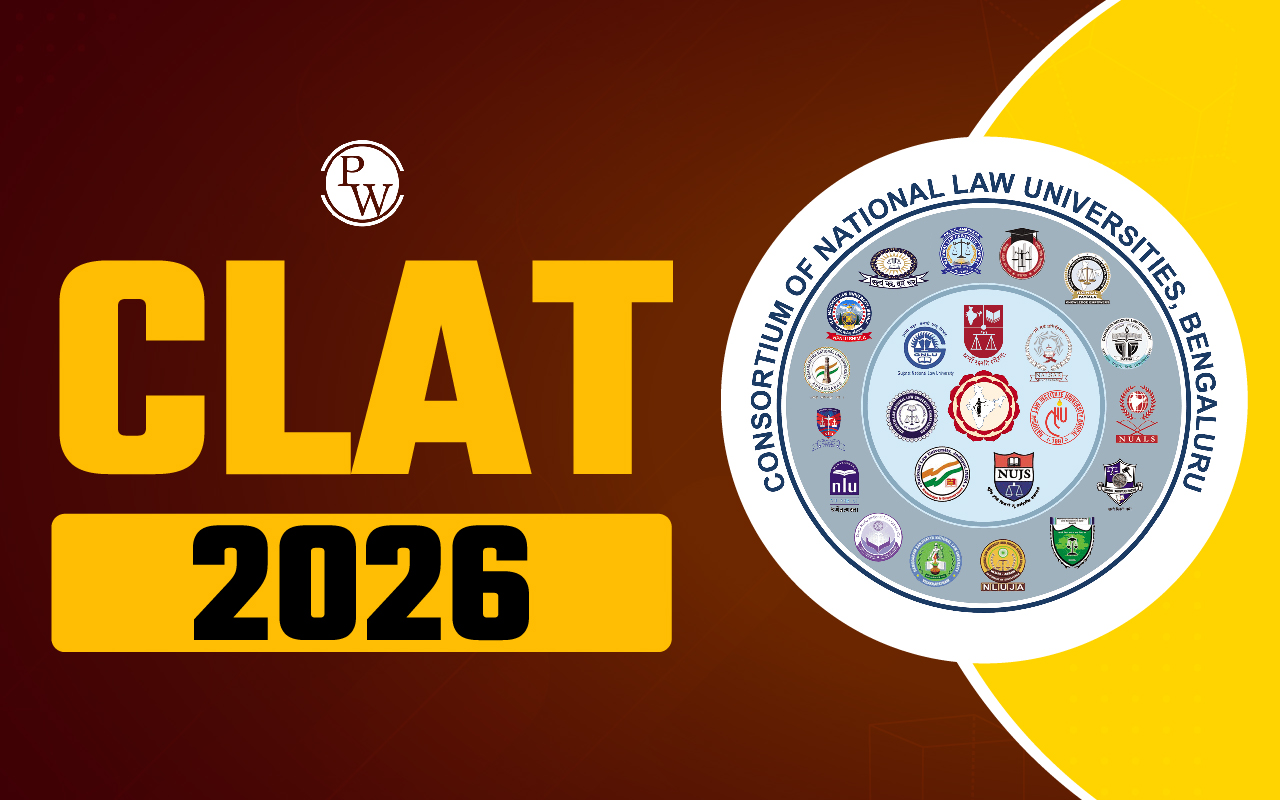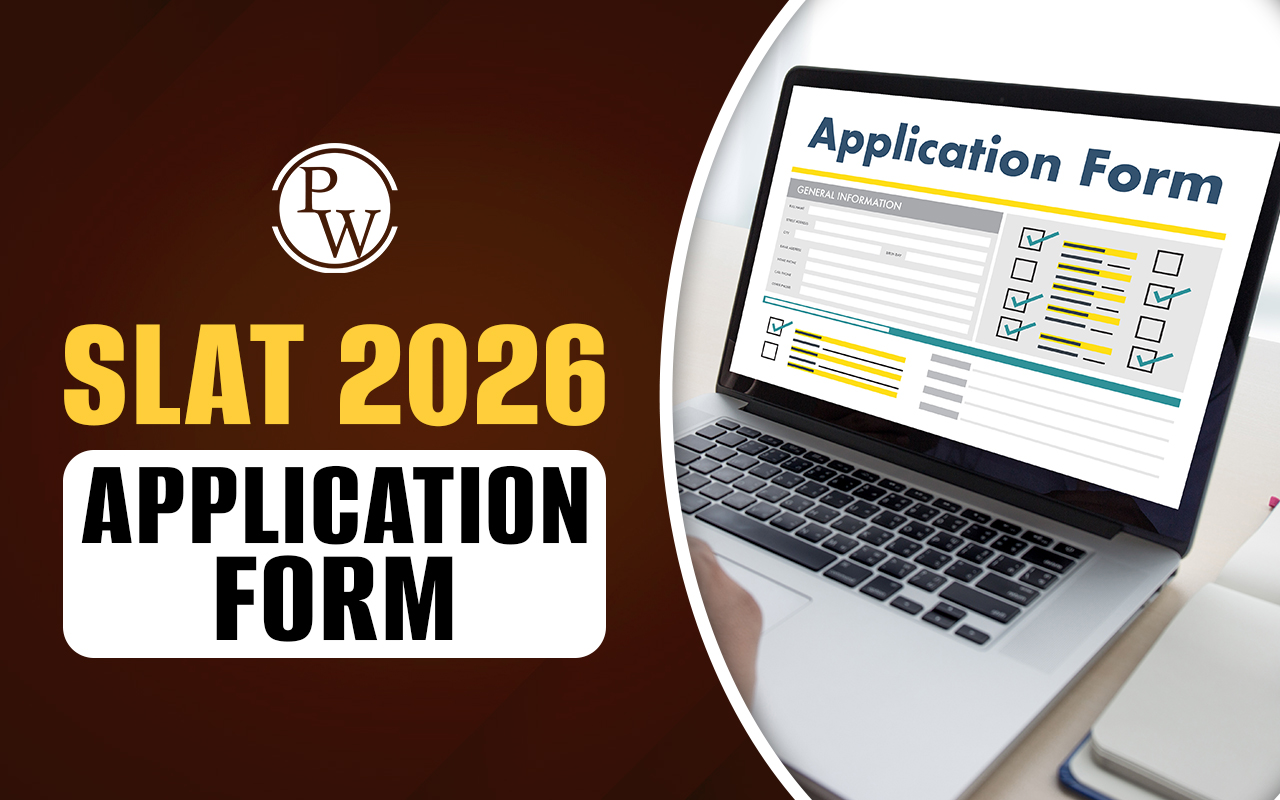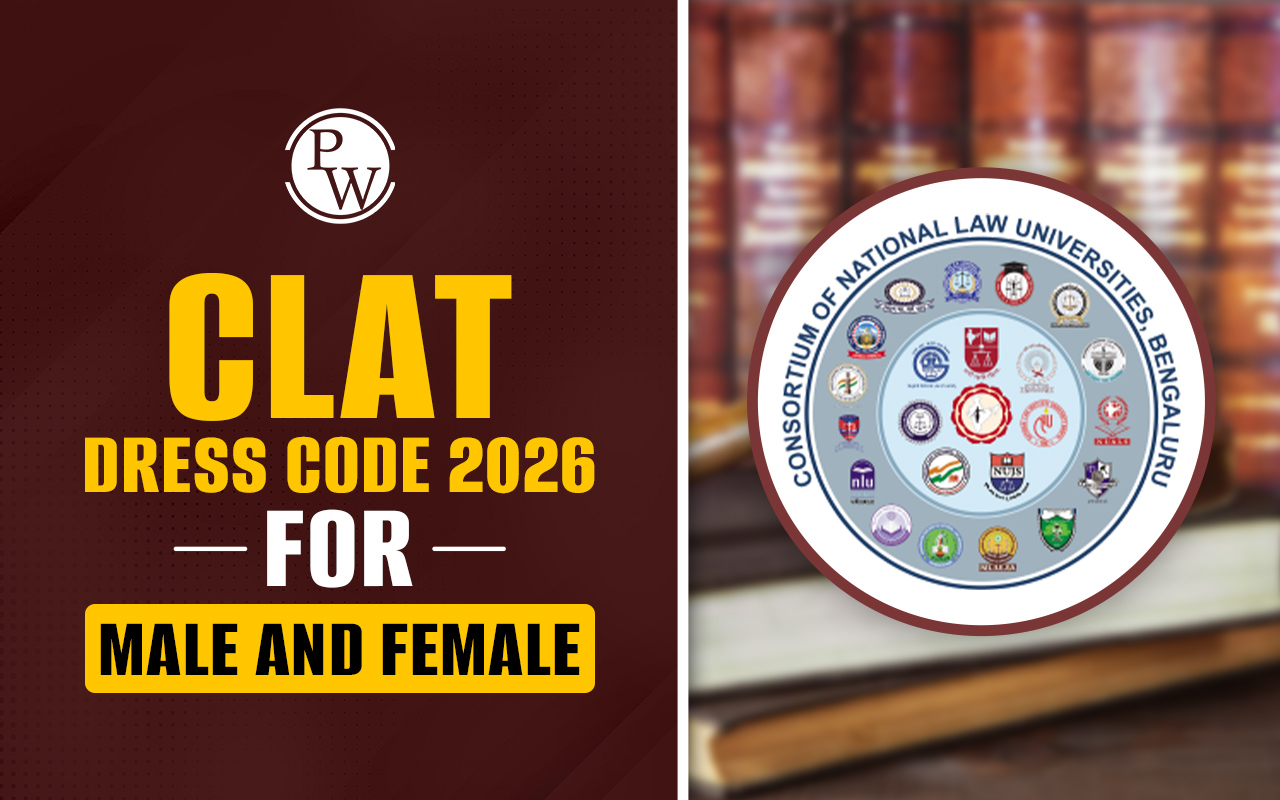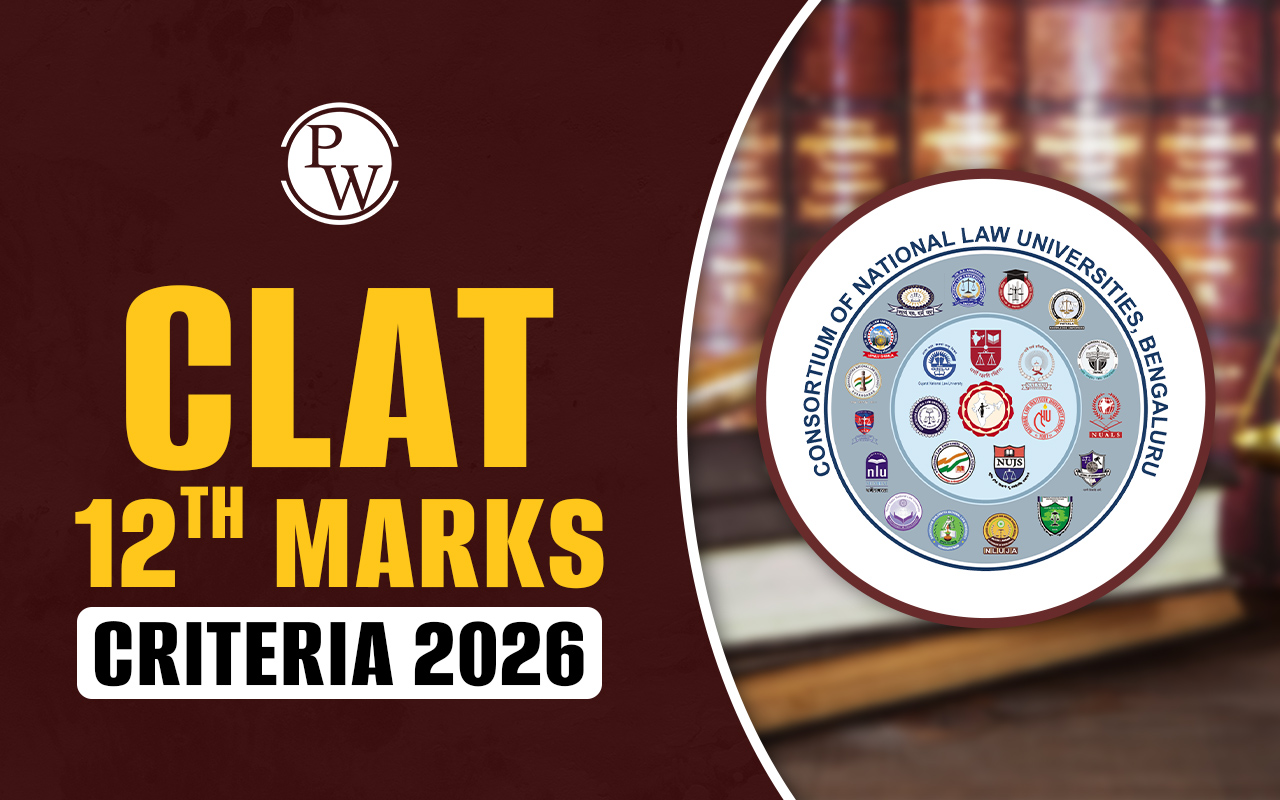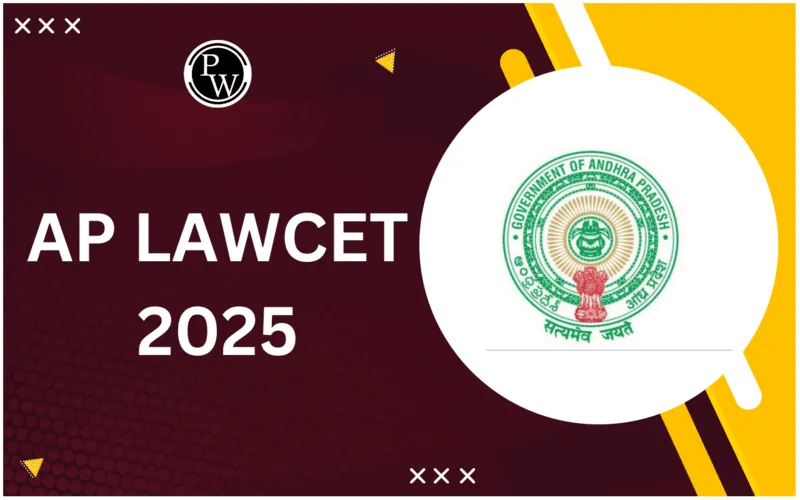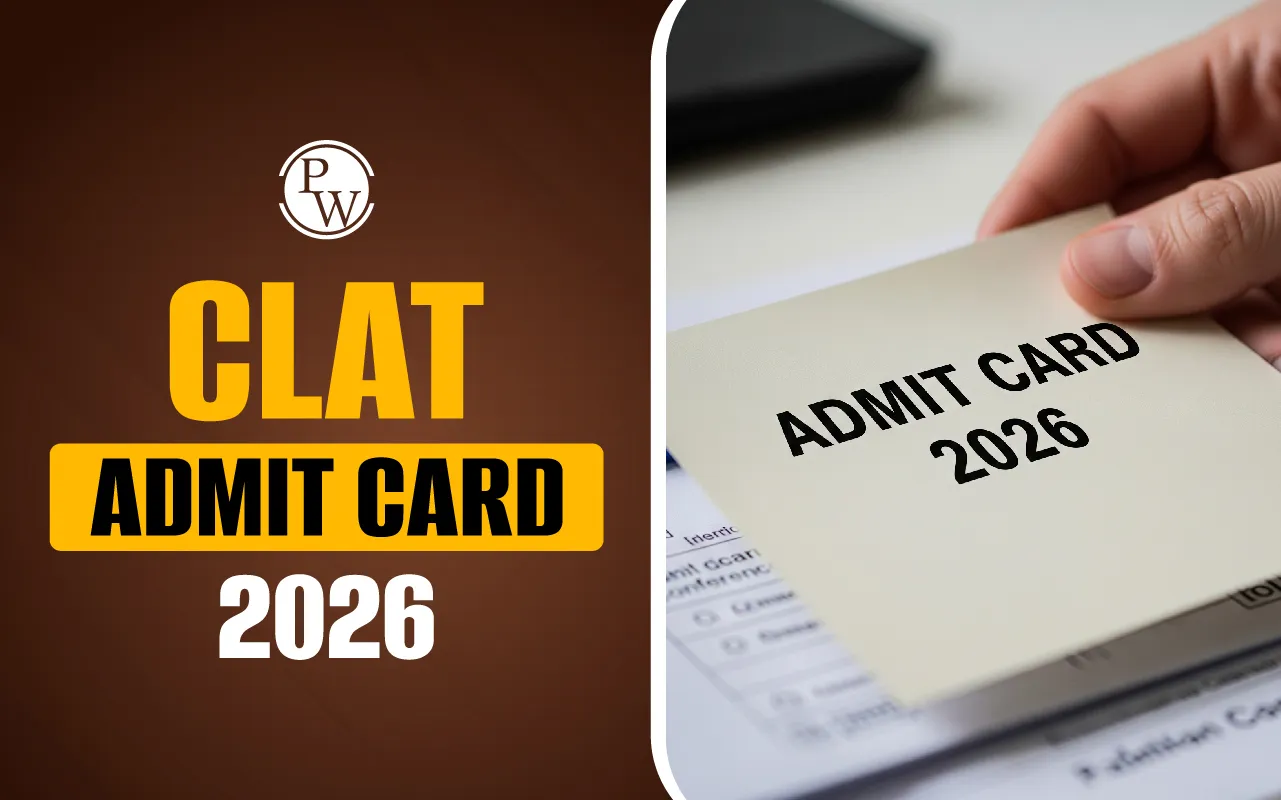

Quantitative Techniques Study Plan for CLAT 2025: The Consortium of National Law Universities (NLUs) conducts the Common Law Entrance Test (CLAT) 2025 for admission to 24 NLUs under various undergraduate and postgraduate law programs. The CLAT 2025 exam will consist of five sections. The CLAT 2025 Quantitative Techniques section has a 10 percent weightage in the exam, yet it can be a deciding factor in the overall performance. The questions will be based on mensuration, arithmetic, and data interpretation. To excel in this section, candidates must develop a strategic approach to attempt the questions. Moreover, consistent practice of questions based on data interpretation and revision of topics will help candidates to obtain the best results in this section.
Checkout Law Books from PW Store
CLAT Quantitative Techniques Syllabus 2025
The CLAT 2025 exam will comprise around 10-14 questions based on Quantitative Techniques. The CLAT 2025 Quantitative Techniques Syllabus includes the following main topics.- Ratio and Proportion
- Mensuration
- Percentage
- Data Interpretation including charts, tables, and graphs
- Statistics
- Time, Distance, and Work
- Comparison between Quantities
Month Wise Preparation Strategies for Quantitative Techniques for CLAT 2025
Quantitative Techniques, while a relatively smaller section in the CLAT 2025 exam , plays a crucial role in your overall score. A structured and focused approach is essential for mastering this section. The month-wise strategy to prepare effectively for quantitative Techniques from August to November is discussed below.August Month: Building the Foundation
- Understand the Syllabus: Review the CLAT syllabus for Quantitative Techniques to understand the types of questions typically asked. The topics include Basic Arithmetic, Algebra, and Data Interpretation.
- Gather Study Materials: Collect standard textbooks and reference materials focused on quantitative aptitude. Consider books like R.S Aggarwal's "Quantitative Aptitude" or M.Tyra's "How to Prepare for Quantitative Aptitude for the CLAT ".
- Concept Review: Begin by revisiting fundamental concepts in Arithmetic such as ratio and proportion, percentage, profit loss, etc. Use online tutorials or videos for conceptual clarity.
- Practice Basic Problems: S tart with solving basic problems to build confidence and speed. Use practice exercises from your study materials to gauge your current level.
September Month: Strengthening Core Areas
- Advanced to Intermediate Topics: Move on to complex areas like mensuration. Dedicate specific days to each topic to ensure thorough coverage.
- Data Interpretation: Begin practicing data interpretation (DI) problems which include data extraction from tables, charts, and graphs. Focus on understanding how to quickly interpret and analyze data.
- Timed Practice Sessions: Start incorporating timed practice sessions to simulate exam conditions. Practice problems with increased difficulty and focus on improving your speed.
- Review Mistakes: Analyze mistakes from practice sessions to understand your progress. Review and revise these areas to improve your understanding.
October Month: Advanced Practice and Mock Tests
- Intensive Practice: Dive into more complex problems and mixed-topic exercises. Aim to solve a variety of problems, including word problems that test your application of concepts.
- Mock Tests: Take full-length mock tests that include a Quantitative Techniques section. Make sure that you are practicing under timed conditions to improve your efficiency.
- Analyze and Improve: Thoroughly review your mock test results to identify patterns in mistakes or areas of difficulty. Focus on improving weak areas identified in these analyses.
- Revision of key Concepts: Regularly revise key formulas, shortcuts, and techniques. Create a formula sheet for quick reference during practice and revision.
November: Final Revision and Exam Readiness
- Focused Revision: In the final month, focus on revising the entire syllabus of Quantitative Techniques. Revisit important formulas and problem-solving techniques regularly.
- Final Mock Tests: take several full-length mock tests to gauge your readiness and refine your test-taking strategies. Simulate actual exam conditions as closely as possible.
- Strategize for Exam Day: Develop a strategy for tackling Quantitative Techniques questions in the exam, such as deciding which types of questions to attempt first.
- Be Calm and Trust Your Preparation: Ensure a balanced approach to study and relaxation in the final days leading up to the exam.
Read More: Is CLAT Tough? A Comprehensive Analysis and Expert Opinions
CLAT Quantitative Techniques Preparation Tips
Preparing for the Quantitative Techniques section of the CLAT 2025 (Common Law Admission Test) requires a strategic approach due to the section's focus on basic mathematics and data interpretation. Some of the preparation tips are as follows.- Understand the key areas covered in the Quantitative Techniques section, including Arithmetic, Mensuration, and Data Interpretation. focus on questions based on data interpretation and quantitative comparisons.
- Start your preparation with fundamental topics like ratio proportion, percentage, average, profit loss, etc. Solidify your understanding of these core topics. Refer to reliable textbooks like R.S. Aggarwal's "Quantitative Aptitude" and M.Tyra's "How to Prepare for Quantitative Aptitude for the CLAT"
- Dedicate a fixed amount of time each day to practice quantitative problems. Consistent practice helps improve speed and accuracy.
- Learn and apply mathematical shortcuts and tricks to solve problems more efficiently.
- Practice questions based on data extraction from tables, graphs, and charts. Focus on analyzing data accurately. Solve DI-based problems regularly to improve your analytical skills.
- Maintain a formula sheet with key formulas, concepts, and shortcuts for quick revision.
- Attempt full-length mock tests. Review your results to identify strengths and weaknesses. focus on areas where you make frequent mistakes.
Read More: CLAT Latest Updates 2025
Preparation Books for CLAT Quantitative Techniques
Some of the recommended books for the CLAT Quantitative Techniques section are as follows.| Recommended Books | Author |
| New Pattern Data Analysis & Interpretation | Disha Publications |
| Complete CLAT Companion |For CLAT / SLAT / AILET / DU & other law entrance examinations |CLAT 2020 and 2021 papers are included with solutions| Fourth Edition| By Pearson Paperback – 1 January 2022 | Karan Mehta and Harsh Gagrani |
| Quantitative Aptitude for Competitive Examinations | R.S. Aggarwal |
Quantitative Techniques Study Plan for CLAT 2025FAQs
What is the CLAT 2025 exam pattern?
How many attempts are there in the CLAT?
What is the pattern change in CLAT 2025?
How many colleges accept CLAT scores?

